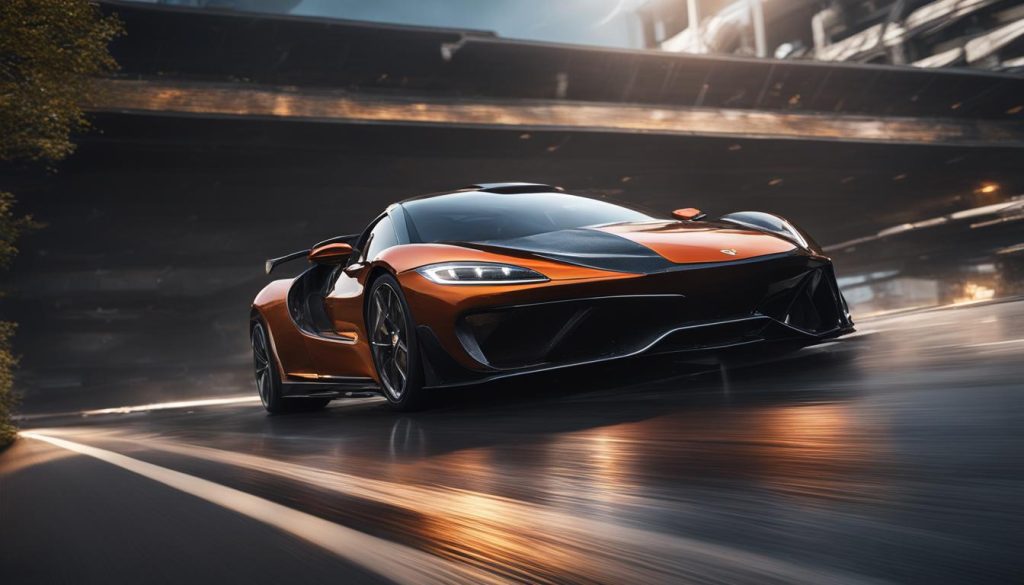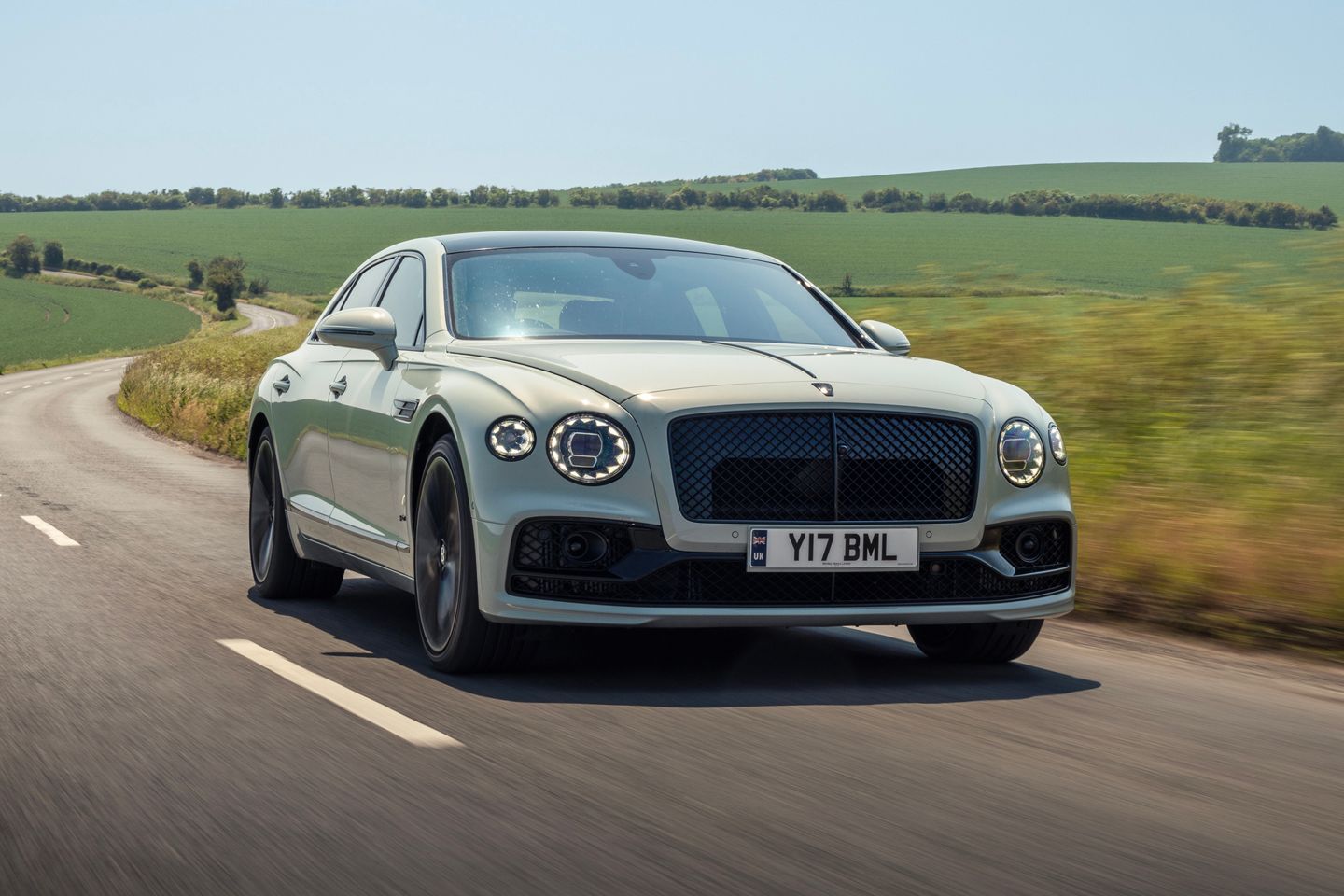
Jesus, I feel like Bill Murray. It’s Groundhog Day, with yet another Bentley Flying Spur to review. Yes, I know I should count myself lucky – and I do, really – but there comes a point, when charged with reviewing the third Flying Spur in less than a year, that one begins to wonder ‘what more can I say?’ Or, more pertinently, what more can I say that’s interesting? The previous two versions I’ve tried were both hybrids – the standard one and the S – and in broad terms this Spur is similar. Similar bodywork, a similar interior, and similarly spacious, too. And that’s all good news.
Firstly, I like the look of the current Flying Spur, and secondly, I’m fond of its interior – it’s a bastion of ballistic-grade quality and as accommodating as a small cathedral in the front, and a large one in the rear. It does what a Bentley should do, which is to make you feel very special indeed. This car is a special Spur, though, and just different enough that I am sure to be able to muster a fresh word or three. After all, this is the Flying Spur Speed Edition 12. That means it has the motor from the Speed, one so far from removed the hybridised V6 in those other versions as it’s possible to be.
The Edition 12 carries in its nose not a teensy-weensy V6, supported by an umbilical cord of wires and magnets. No, it has the nobility of the W12. What we’re talking about here is twice the cylinder count of the hybrid, more than twice its engine capacity, and 58 per cent more power than the hybrid’s V6 petrol. This W12 has 659hp in total, so even if you factor in the hybrid’s electrical side, this petrol-powered monolith to the past still outguns the future by 115hp.
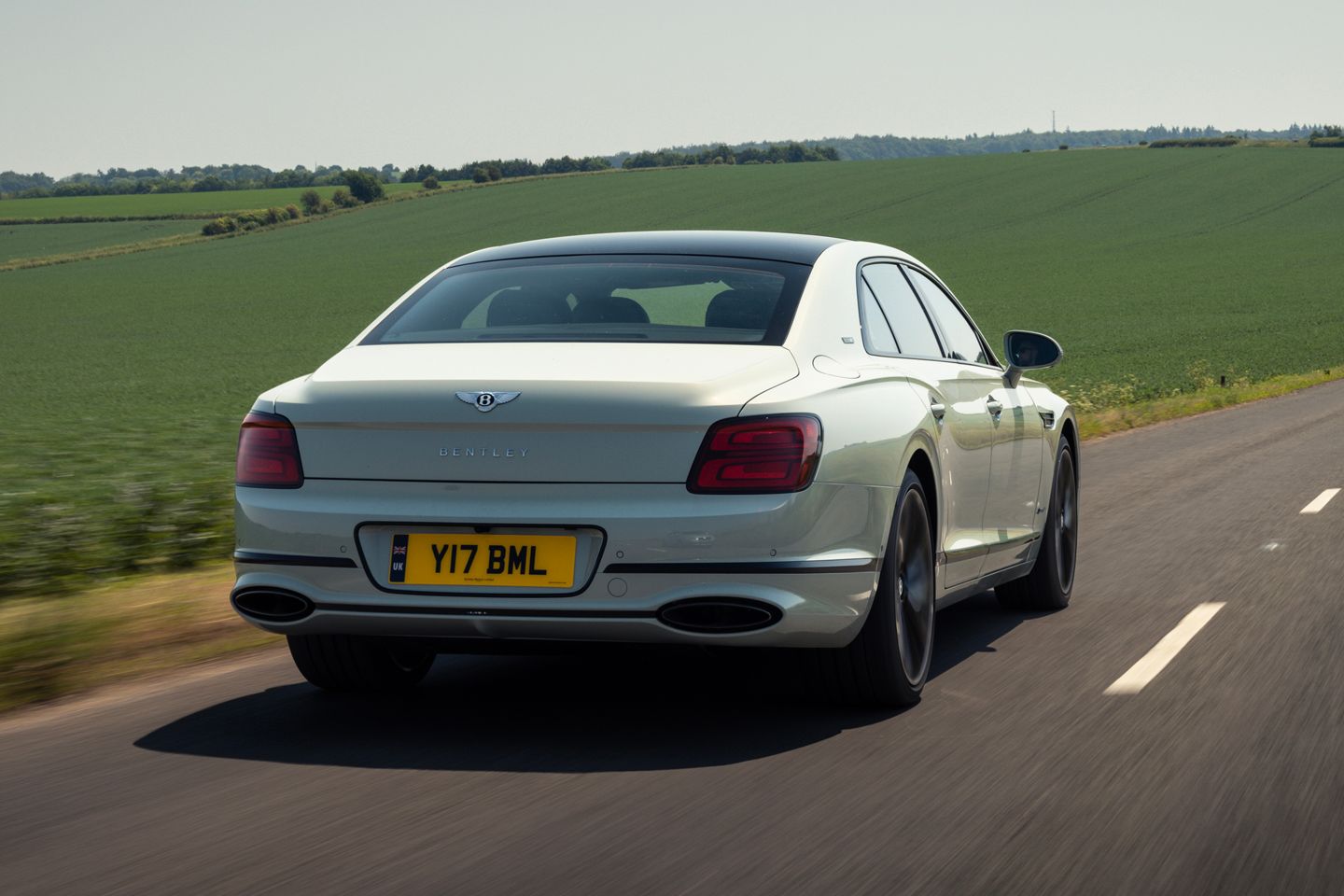
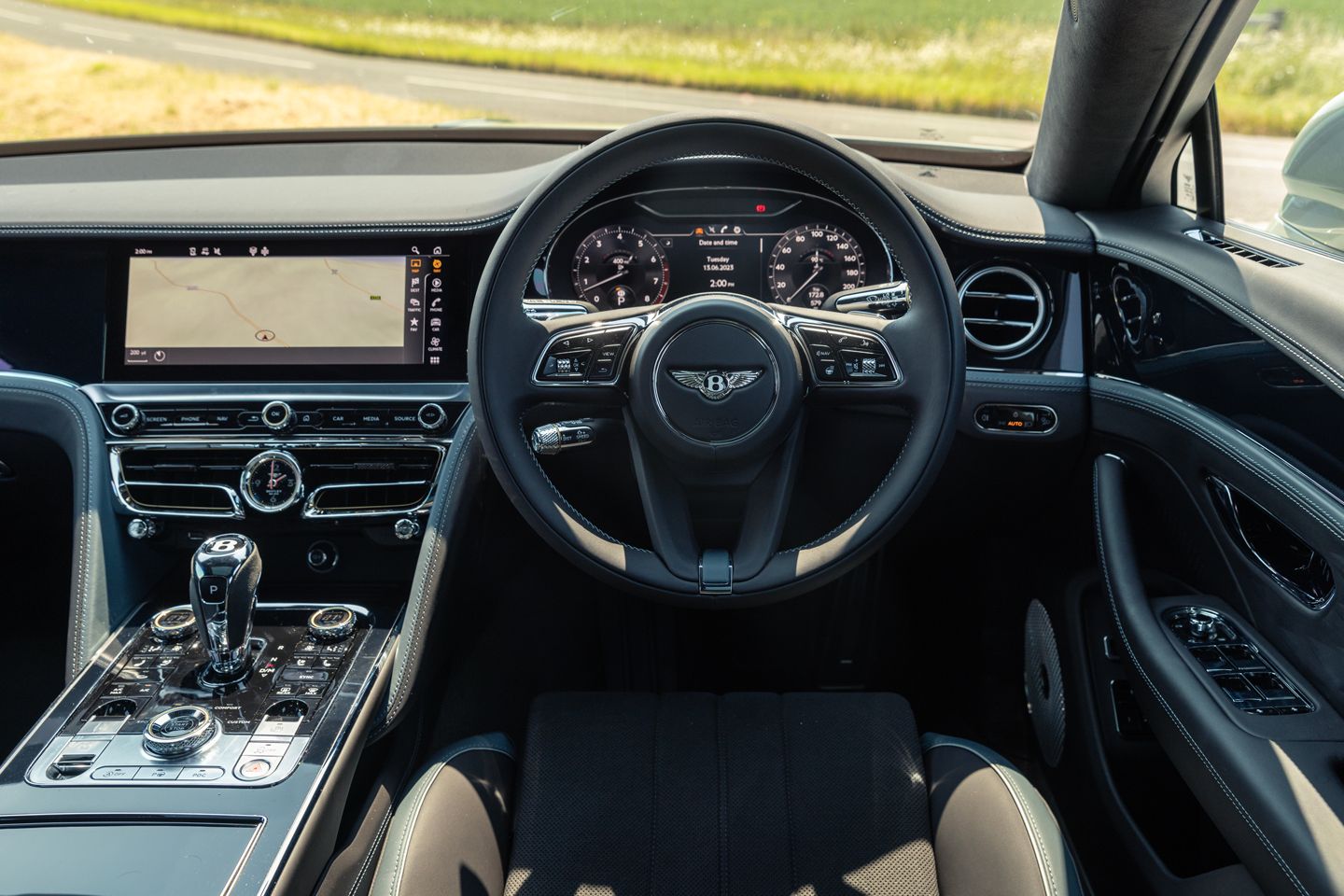
Not a bad count, then, and the torque it produces is also astonishing: 664lb ft puts it 111lb ft clear of the hybrid’s total twist, and that’s available as a constant between 1,500rpm and 5,000rpm. I know hybrids can be made even more spectacular, but it’s still remarkable to see what the old guard can muster after all these years of evolution.
Of course, that evolution has come to an end. That’s the point of this Edition 12, if you haven’t twigged already. It’s the last hurrah for twelve-cylinder Bentleys. Yes, there was Batur – a limited-run, 740hp adieu to Bentley’s delectable dozen – but to get that you needed £1.8m. The Speed Edition 12 models (there is a version for the GT, Spur and Bentayga range) is the last opportunity to grab a W12 if you’re a sweat-stained-blue-collar plutocrat, who can scrape together only a piffling £231,200. And if that’s you, you have all our sympathy, I’m sure.
Other perks of the Edition 12 include this car’s rather attractive shade of paint. It’s an option unique to the Edition 12, and is described thus: ‘a light grey-green, it has a subtle copper effect that glows in bright sunshine’. All I can say is that when I looked at in the sunshine, I thought ‘phwoar, that’s a bit special’. It would’ve been nicer to see it paired with something other than black 22-inch wheels (you can have silver wheels), but at least those highlight the other unique feature of the Edition 12’s exterior, which are its silver brake calipers. And they are huge, by the way, as are the discs they clamp onto. There are also some Edition 12 badges and a plaque on the engine cover as well.

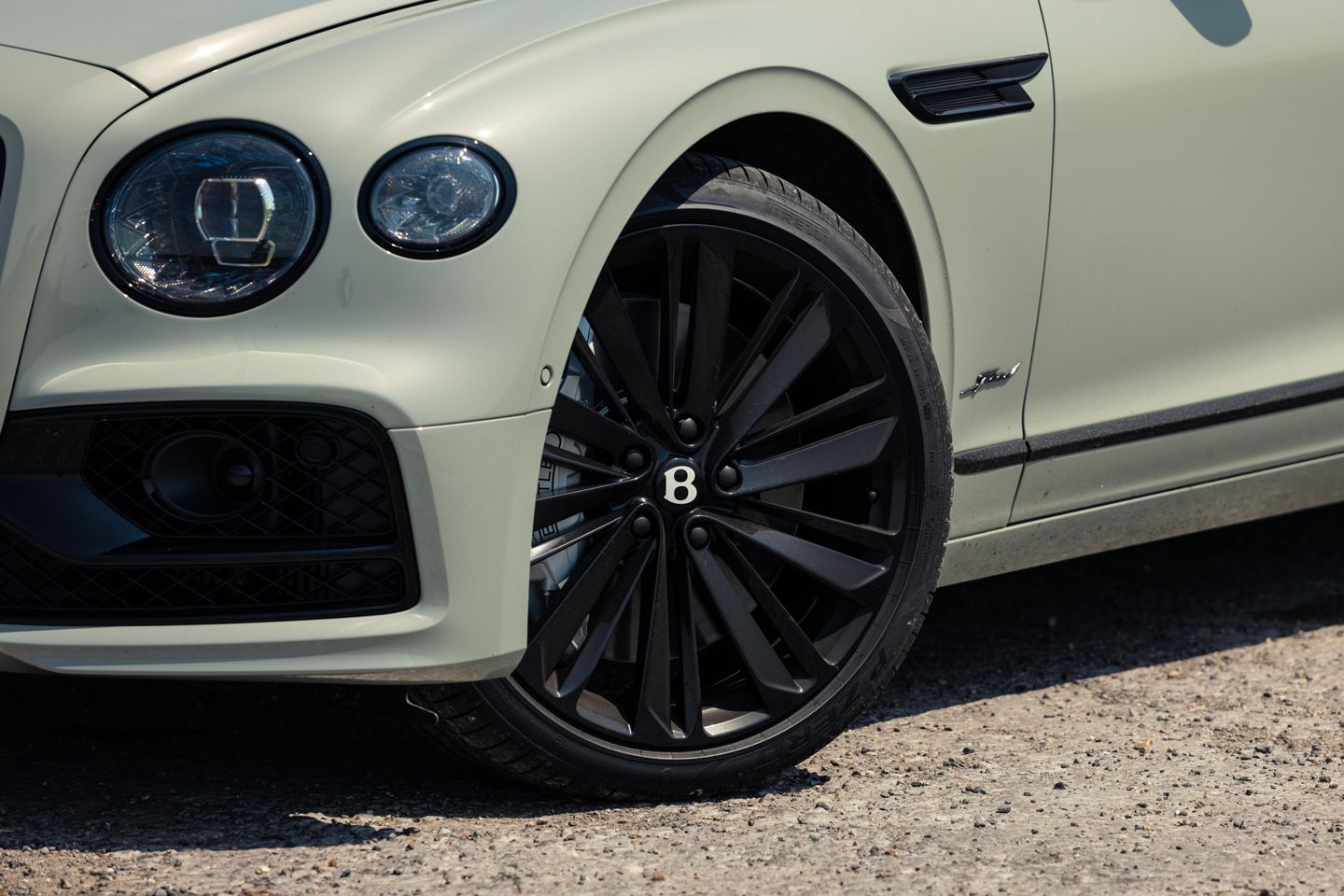
Inside, it’s still the same beautiful execution of chrome and craftsmanship, put together in a manner that doesn’t feel handmade. By which I mean nothing is about to fall off in your hand anytime soon. But again, to make the Edition 12 distinctive it comes with trinketry that includes illuminated Edition 12 treadplates, the same moniker embroidered into the quilted leather seat facings, and the seats are piped in silver. Beyond that, we’re into details. Details that perhaps only a real enthusiast will appreciate, such as the ‘12’ machined into the organ stops (that’s the traditional Bentley name for the face-level-vent controls, just in case you weren’t aware) and the engine’s firing order described on the piano black veneer in front of the front passenger. It’s all a bit twee or rather lovely – in a poignant way – depending where on the cynicism spectrum you sit. I sit on the ‘lovely’ side.
But speaking of cynicism, my opinion of the W12, when it was introduced in 2003, wasn’t a good one. Back then, of course, the L-Series V8 was the ‘proper’ Bentley motor. It had recently been brought back into service and continued to be this joyous bundle of pushrods and low-rev torque, wrapped up in a cast aluminium box. The W12 was a Volkswagen motor, and the Continental GT was a Volkswagen Phaeton in Crewe’s attempt at a haute couture frock. In comparison to the L-Series, the W12 seemed dreary, booming and quite colourless.
But whether it’s the changes that have occurred within the W12 over time, or time mellowing me, I don’t know – maybe both – but I really like the W12 these days. Partly because it no longer feels like it’s trying to be something it isn’t. The monotonous boom of those early Continental GTs, which was how Bentley tuned the exhaust to sound sporty, has disappeared. What’s left is a pure, mechanical sound. A rich sound that’s not that dissimilar to a V12, in fact. It has a similar smoothness, and that similar, sublime, mechanical resonance at points in its rev range that’s familiar to anyone who’s driven a straight six or V12. So quiet is it now that I heard something I’ve never heard before in a Bentley W12: the quiet chuff of the blow-off valve, releasing what I’d imagine to be quite a rush of air if you lift off when the turbos are in full flow.
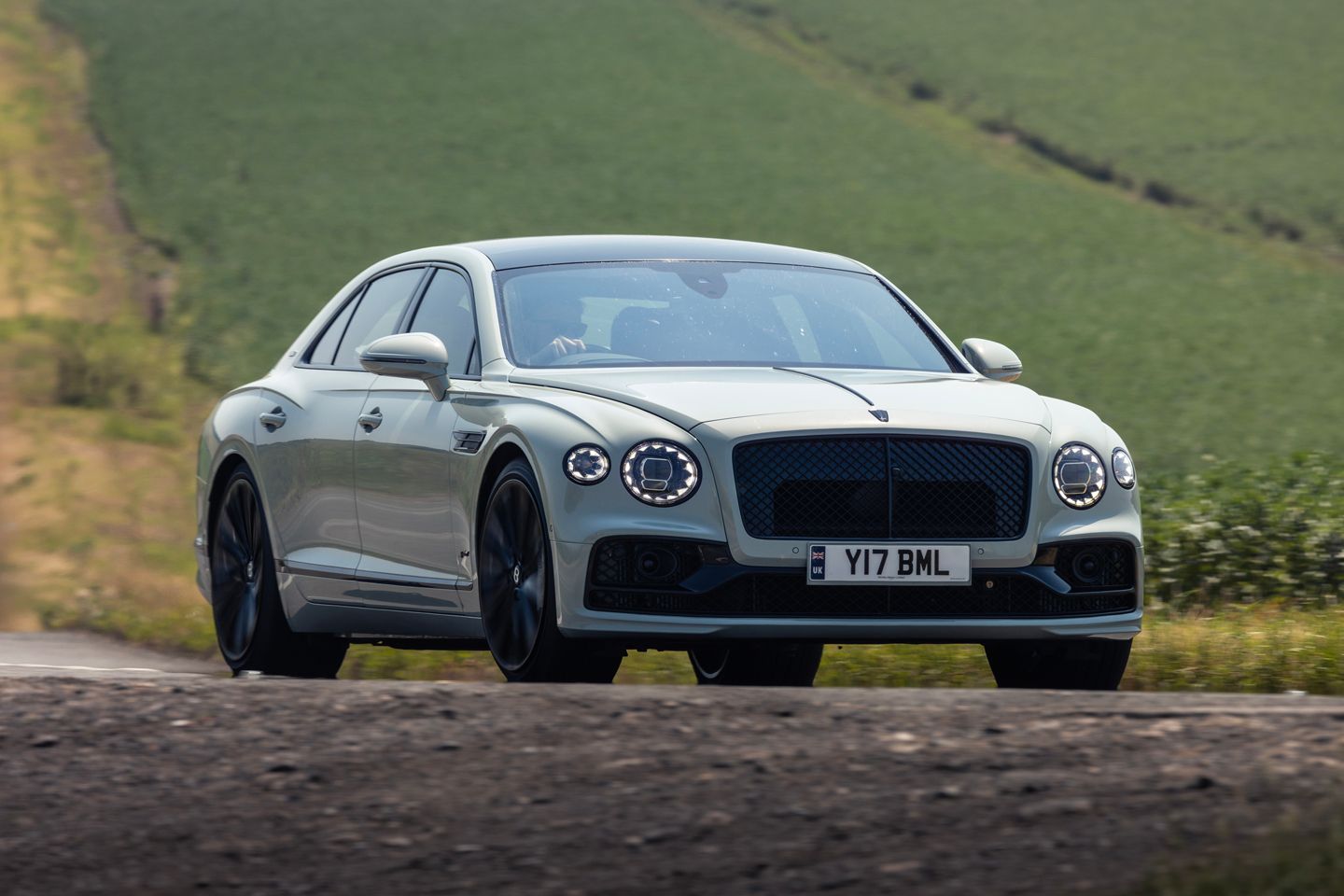
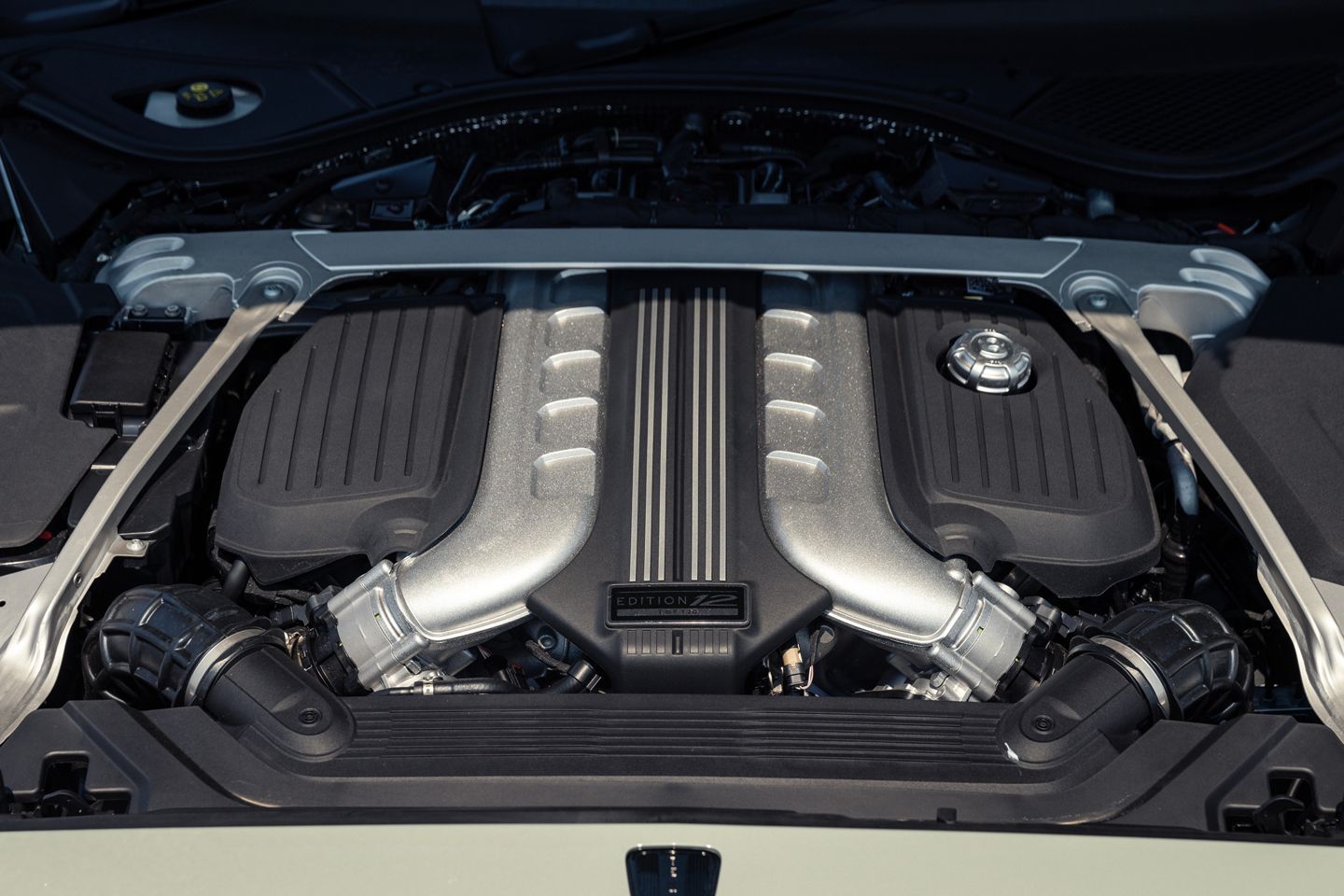
When they are in full flow, and you don’t lift off, the performance is quite something. The outright speed of the Speed is startling, in fact – it does 0-60mph in 3.7 seconds, and you don’t need me to describe that as fast. Of course it’s fast, and ridiculously so. But if that doesn’t impress you because you’re thinking what’s the point in a road car – and I see your point – that’s not what this car is for. It’s not what makes it special. You don’t hoof it everywhere hitting 60mph in the blink of an eye, because that would be moronic.
What you do is ride a wave of torque that, were it not for the enjoyable, discrete, whir emanating from up front, is so impressive that it could be being produced by an electric motor. That’s because the shove is there over such a wide band and in such enormous quantities, you see. It’s not coming from electricity, though. Here it’s being made by wild explosions, thrusting 12 pistons back with enormous force – force that’s being taken by the strain of cylinder walls, little and big ends, and main bearings. Those explosions are being fuelled by injectors that are working at a pressure so high, it’s as hard to comprehend as the vast distances of the space. And the oxygen that is being pumped in to burn the fuel is fed by turbos that are spinning at just as inconceivably high speeds. Then there are the valves. 48 of them, all being subjected to tortuous g force as they blink open and shut many, many times a minute.
When I think of all that happening, and the fact that it’s all going on but I can feel barely a vibration or hear a noise and it keeps going on so reliably, I am in awe. Maybe even a little bit in love, actually. In love with the amazing evolution that has led us to this point. The fact that this petrol engine is so good that it can mimic the effects of a high-powered electric motor is, to me, weirdly thrilling. You could argue, why not just fit it with an electric motor? Well, they will, soon, and that’ll be that. It’ll be like all the other electric motors, in much the same way that a quartz watch is just like all the other quartz watches at its core. An automatic watch, though, is fascinating. It’s full of cogs and springs and someone’s skill in designing and assembling it. Just like an internal combustion engine. This W12 is special because it has more than just one moving part – it has hundreds of them, all being punished so completely and yet so unobtrusively, and I adore it for that. Heck, it even did 22mpg, which I know is nothing to crow about in the grand scheme, but it’s impressive for a car producing this much power with this much weight to cart around.
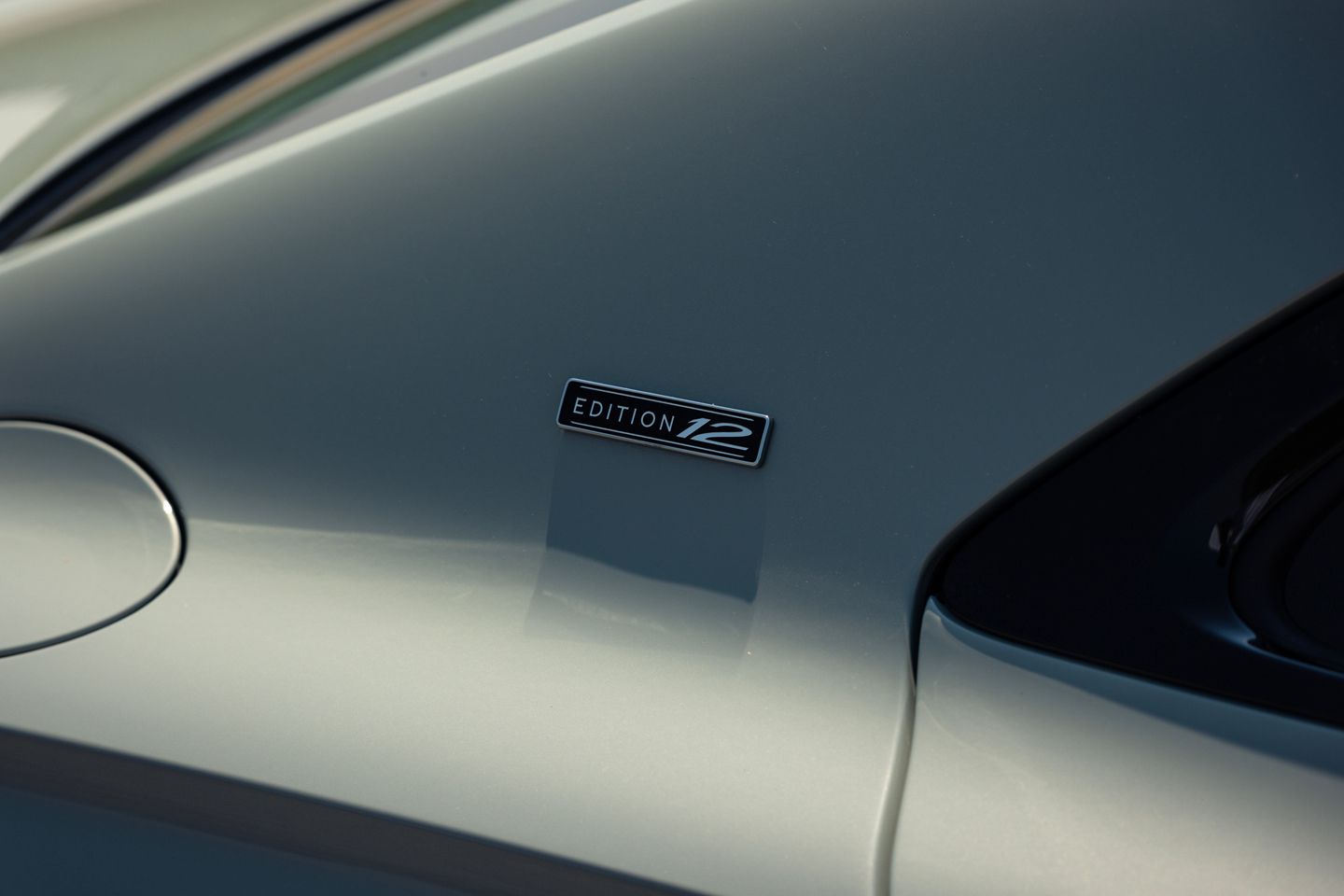
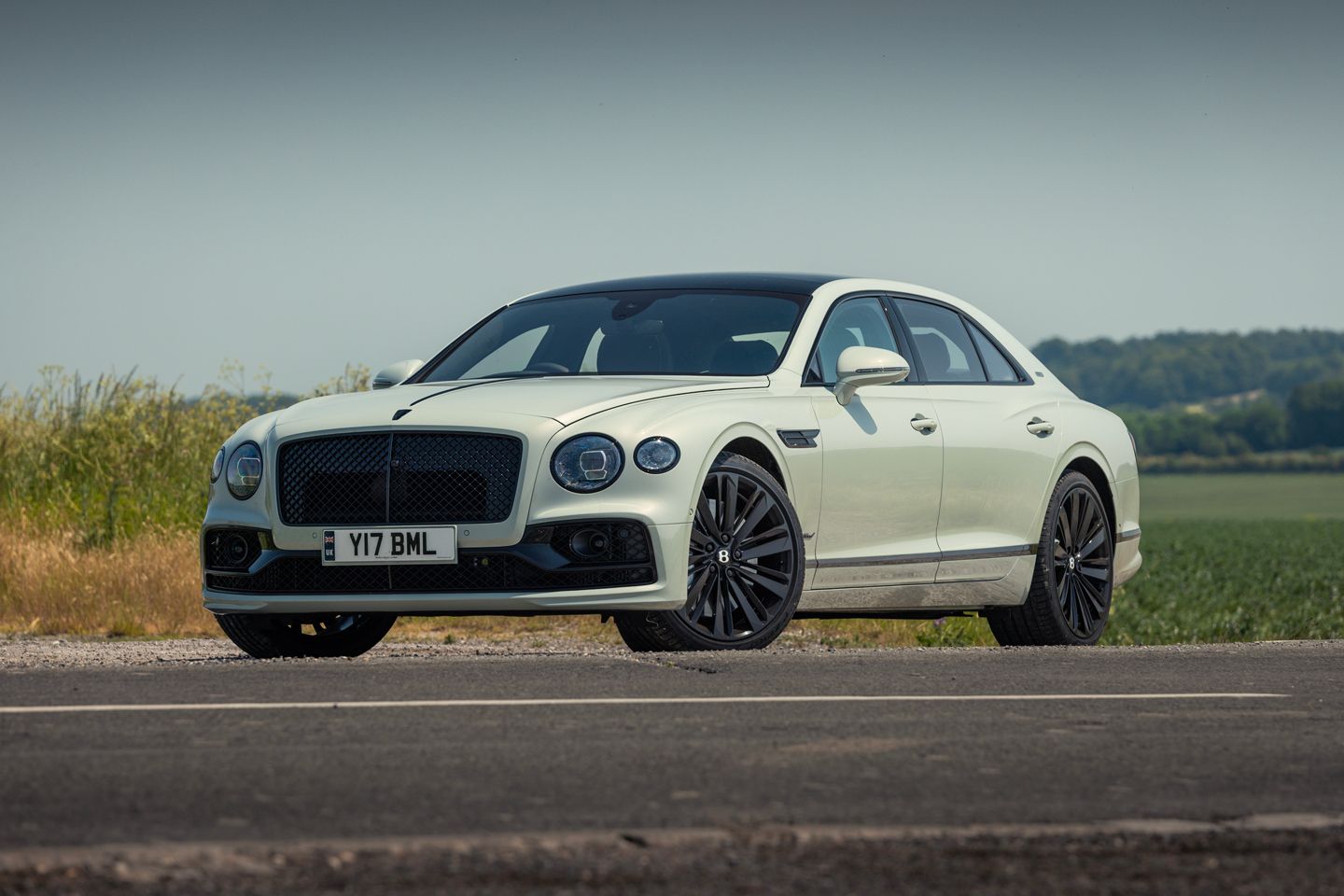
There are other advantages to this W12. It’s not exactly a flyweight itself, but without the burden of a large battery pack on board, the W12 feels lighter and livelier in the bends than those hybrids Spurs. It properly handles. The steering is quick-witted, accurate and makes the front end feel keen. And, thankfully, it’s also blessed with a faithful rear end that is very able to keep up with it. All of which means you have a balanced chassis that enables you to cover ground at a searing pace – a pace that doesn’t feel all that searing from behind the wheel, though, simply because it comes so easily.
Bentley is a little opaque when it comes to kerbweights on its website, but my understanding is this W12 is, at best, only 100kg or so lighter than the hybrid. Yet that seems to help the ride, too. Despite those Ferris wheel wheels, it manages to find a composure that the Hybrid S lacked (on 21s) over bigger potholes. At the same time it maintains the supreme – and I do mean supreme, people – high-speed waft of any Spur. The way this Edition 12 glides seamlessly along a section of British – or any, I should imagine – motorway is truly worthy of the Bentley name. There are many other luxury cars that don’t live up to their names in that respect, but this one does. It’s one of those cars that brings to mind my Eurostar analogy. Travelling at speed in the Spur is like travelling on a modern, high-speed train. It gives you that same sense of isolation and tranquillity, yet when you look out of the window and see the world outside washing past in a blur, it’s all rather incongruous. I find that rather magical.
And that’s the impression that the Flying Spur Speed Edition 12 left me with. It’s rather magical. I accept that I am probably going a bit over the top, there, but at least give me majestic if magical is too stupid a word. Yes, I am a dewy-eyed at the thought of twelve-cylinder cars disappearing into the abyss. I’ve always liked them, you see – well, all except those first W12s. So for the W12 to have won me over finally is impressive, and now I know it’s soon to be over, a bit galling, too. Just 120 Flying Spur Speed Edition 12s will be made, and with each one you get a 15 per cent scale model of a W12 – made, incidentally, from the melted-down engine block of a W12. I’d quite like to own the just model, to be honest – but I’d be even happier to have the real thing sitting in the nose of this Spur. Turns out Groundhog day in a Spur with a W12 is worth repeating after all, for as long as it’s possible to do so.
SPECIFICATION | 2023 Bentley Flying Spur Speed Edition 12
Engine: W12, 5950cc, twin-turbocharged, petrol
Transmission: eight-speed automatic, all-wheel drive
Power: 659hp at 5,000rpm
Torque: 664lb ft at 1,500-5,000rpm
0-60mph: 3.7sec
Top speed: 207mph
Weight: 2437kg
Economy: 18.8mpg
CO2: 340g/km
Price: £231,200
#Flying #Spur #Speed #Edition #Review



